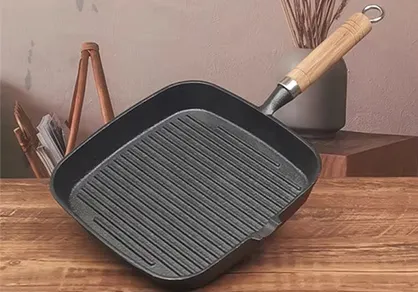
Exploring the Joy of Dutch Oven Cooking Tips and Recipes for Delicious Meals
Exploring the Art of Dutch Oven Cooking
Dutch oven cooking is a cherished culinary tradition that has stood the test of time. Often made of cast iron and known for its versatility, a Dutch oven can be used to bake, sauté, simmer, and even fry. This remarkable piece of cookware can transform ordinary ingredients into flavorful, hearty meals, making it a staple in both home kitchens and outdoor cooking settings.
History of the Dutch Oven
The history of the Dutch oven dates back to the 18th century when it was first introduced by Dutch metalworkers. Their innovative casting methods created robust cookware that could evenly distribute heat. The term Dutch oven is believed to have derived from the casting techniques used in the Netherlands. Over the years, its design evolved, but its fundamental purpose as a cooking vessel remains unchanged. By the 19th century, the Dutch oven became a household item in America, especially among pioneers exploring the western territories.
Types of Dutch Ovens
Dutch ovens come in various shapes and sizes, with materials ranging from uncoated cast iron to enameled versions. Uncoated cast iron is known for its superior heat retention and versatility, ideal for both stovetop and oven use. Enameled Dutch ovens, on the other hand, offer an attractive finish that prevents rust and makes cleaning easier. They come in various colors, adding aesthetic appeal to any kitchen.
Benefits of Dutch Oven Cooking
One of the primary benefits of using a Dutch oven is its heat retention capability. The heavy lid traps moisture, making it perfect for simmering stews or braising meats. This moisture retention results in dishes that are tender and flavorful. Furthermore, a Dutch oven can handle high temperatures, allowing for searing and browning before slow-cooking.
The multi-functional aspect of Dutch ovens is another highlight. They can be used for baking bread, making casseroles, roasting meats, or even preparing desserts. This versatility makes it an indispensable tool for home cooks and outdoor enthusiasts alike. Whether on the stovetop or over an open flame, a Dutch oven can be a reliable companion.
Cooking Techniques
When it comes to cooking with a Dutch oven, there are multiple techniques to explore
1. Braising This method involves searing the meat first and then adding liquid to cook slowly. This technique results in tender, flavorful dishes, such as pot roast or coq au vin.
dutch oven cooking pdf

2. Baking Dutch ovens can be used to bake rustic bread. The enclosed environment creates steam, resulting in a crusty exterior and soft interior.
4. Roasting The heavy lid allows for even cooking, making it suitable for roasting meats and vegetables.
5. Frying Thanks to their heavy construction, Dutch ovens are excellent for frying, as they maintain consistent heat.
Tips for Success
To make the most out of your Dutch oven, consider the following tips
- Preheat before cooking When using in the oven, preheating the Dutch oven can improve cooking results, especially when baking.
- Maintain seasoning For uncoated cast iron, maintaining the seasoning by regularly applying a thin layer of oil will prevent rusting and ensure non-stick properties.
- Control heat When cooking on the stovetop, start with medium heat and adjust as needed. Cast iron retains heat well, so high heat might not be necessary.
- Use the right utensils Avoid metal utensils that can scratch the enamel on coated versions. Opt for wooden or silicone tools instead.
Conclusion
Dutch oven cooking is more than just a method; it's an experience that invites creativity and patience in the kitchen. The ability to create a wide array of dishes from a single pot makes it an essential tool for any home cook. With a little knowledge and practice, you can harness the full potential of this remarkable cookware, transforming simple ingredients into comforting, delicious meals that bring family and friends together around the table. Whether your adventures take you indoors or outdoors, mastering Dutch oven cooking will undoubtedly enhance your culinary repertoire.
-
Season Cast Iron Perfectly with GPT-4 Turbo TipsNewsAug.01,2025
-
High Quality Cast Iron Cookware - Baixiang County Zhongda MachineryNewsAug.01,2025
-
Premium Cast Iron Pan: Durable & Perfect HeatNewsAug.01,2025
-
High Quality Kitchen Durable Black Round Cast Iron Cookware Pancake Crepe Pan-Baixiang County Zhongda Machinery Manufacturing Co., Ltd.NewsAug.01,2025
-
Cast Iron Cookware - Baixiang County Zhongda Machinery | Nonstick, Heat ResistanceNewsAug.01,2025
-
High Quality Kitchen Durable Black Round Cast Iron Cookware - Baixiang County Zhongda Machinery | Non-Stick, Heat Retention, DurableNewsJul.31,2025


